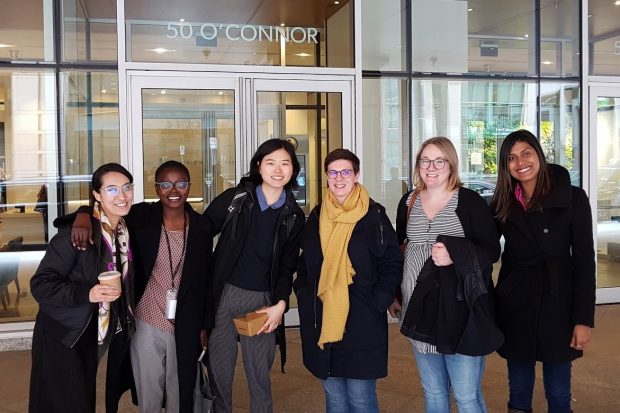
After 2 and a half years at the Government Digital Service (GDS), I’m leaving to be UX Research Operations Manager at the publisher Springer Nature. I wanted to share what I’ve learned during my time here.
A diverse and inclusive community is stronger, healthier and more productive.
I am proud of the user research and analysis community at GDS, which is really diverse and inclusive. I wrote about the importance of diverse communities when I reflected on my visit to the Canadian Digital Service.
I feel I have personally benefited from a supportive Civil Service that embraces different kinds of people and supports their learning, development and progression. This has not always been the case in my career.
I realised that I can be a leader in the Civil Service. I still have a lot to learn about leadership, but I know I am capable of it and that other people believe me capable of it.
Before I became a civil servant, I learnt to be a practitioner but no one encouraged me to be a leader. In fact, I was often actively discouraged – I did not fit the mould, I did not fit people’s vision of what a leader is.
A softly-spoken, mild-mannered, shy, anxious introvert may not be an obvious fit but that’s the great thing about a supportive, inclusive workplace – they can be.
Insights matter
We can’t be complacent about user-centred design. Good practices must be embedded in the delivery and running of services, this is something that we all have to constantly work at. We must support each other to continue learning.
An example of the user-centred work I got to do – when it was first announced that we would be iterating the Service Standard, I was a senior user researcher on what was the Service Manual, Patterns and Tools team. It was clear that updating the standard would have an impact on the Service Manual and other guidance, and we needed to understand what the impact would be.
First, I made a service map of building a service; it was clear from this that all roads were leading back to the foundational question of ‘what is a service’. So I got to do some really interesting research, which led to an updated service definition, reflecting how we think of services now.
Prompting good work and learning
As a lead user researcher on the Service Design, Standards and Assurance programme, I led on the user-centric, evidence-based approach to iterating the Service Standard, making sure that we took a collaborative approach across government.
It’s important that the standards ensure that the services government delivers meet user needs. To help government do this, we also improved the assessment process.
Working on the Service Design and Assurance programme and in the role of Head of User Research and Analysis, I have got to meet and see a lot of great work that is happening across government as well as support those who need it.
Particularly, as head of community, it was part of my role to champion combining quantitative and qualitative data, including mixing methods, research and performance analysts working together for better outcomes, using A/B testing to improve HMRC services and using data in user research when you have no web analytics.
How to build capability
GDS thinks about and does a lot in the area of capability building – both internally and externally. As a programme lead and head of community, I have learnt a lot about and implemented and supported learning and development at lots of different levels.
You can build individual capability through reading both on topics and off topic, attending meetups, workshops and conferences, on-the-job learning and shadowing.
There are lots of ways to improve team capability, too. Last month, Tingting Zhao (former lead user researcher at GDS) and I wrote about training our teams to better understand the various aspects of user research so that team members can be engage in research as a team sport.
It’s also possible to build capability within programmes. It’s possible to do this through planning research and testing guide crits, and sharing methodology experience to name but 3.
Something that I started to do and support is to pilot workshop exercises and structures.
Internal to GDS, we have regular community show and tells to share things we are working on and to reflect on what we have learnt. We also have ‘user insight studios’ on a monthly basis, where we have 3 hours to learn together.
Researchers take it in turns to run these, and sometimes we invite guest speakers. For example, we’ve previously hosted City University, who ran a workshop about working with users with aphasia, and Amy Everett, who did a talk on contextual research.
We have already covered a wide range of topics and learned a lot from each other. But the studios serve another purpose as well – they are important for community building and allowing researchers to socialise and spend time together.
It’s all about the people in the community
And finally, the cross-government user research community is a strong, active community. I have learnt a lot from the online conversations and meetups. Sharing and collaborating with other government departments is an important part of the user research experience in government and will become more important as more teams work towards the current service standard. Providing training for the wider community is integral to GDS vision and purpose.
I will take what I’ve learned with me as I embark on the next step of my career.